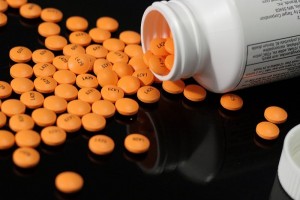A new study provides key insights into aspirin’s disease-fighting abilities.
A recent study led by researchers at the Boyce Thompson Institute (BTI) shows that salicylic acid, an active metabolite of aspirin, blocks HMGB1, an inflammatory protein associated with a wide variety of diseases.
Aspirin is one of the oldest and most commonly used medicines, but many of its beneficial health effects have been hard for scientists and physicians to explain.
Researchers have identified a key target of aspirin’s active form in the body which is salicylic acid, responsible for some of the many therapeutic effects that aspirin has.
Aspirin’s pain-relieving effects have long been attributed to its ability to block the enzymes cyclooxygenase 1 and 2, which produce prostaglandins hormone-like compounds that cause inflammation and pain.
However, the body rapidly converts aspirin to salicylic acid, which is a much less effective inhibitor of cyclooxygenase 1 and 2 than aspirin.
In the current study, researchers discovered the interaction between salicylic acid and HMGB1 by screening extracts prepared from human tissue culture cells to find proteins that could bind to salicylic acid.
They identified one of these proteins as HMGB1. This is associated with many prevalent, devastating diseases, including rheumatoid arthritis, lupus, heart disease, sepsis and inflammation-associated cancers, such as colorectal cancer and mesothelioma
In the body, HMGB1 is normally found inside the nucleus, but can enter the blood stream when released from injured tissues or secreted by certain immune or cancer cells.
The protein in the blood stream triggers inflammation by recruiting immune cells involved in preventing infections and repairing damaged tissues.
The researchers further investigated the interactions between salicylic acid and HMGB1’s role in the body.
Using assays that measured the effects of salicylic acid on the recruitment and activation of immune cells, they showed that salicylic acid could block both of these functions at concentrations similar to those found in people on low-dose aspirin.
They found that HMGB1 is involved in countless situations where the body confronts damage to its own cells, which occur in many disease conditions.
They confirmed that salicylic acid can bind to HMGB1 and also be used to identify the salicylic acid binding sites.
They identified two derivatives of salicylic acid, which are far more effective than salicylic acid in blocking HMBG1’s pro-inflammatory activities.
After synthesizing one compound in the lab, a second was isolated from a licorice plant used as a Chinese medicinal herb.
Researchers have identified both synthetic and natural derivatives of salicylic acid which are 50 to 1000 times more potent than salicylic acid or aspirin in suppressing the pro-inflammatory activity of extracellular HMGB1 thereby providing proof that more effective salicylic acid-based drugs are attainable.
The analyses of these derivatives revealed that appropriate modifications of salicylic acid can enhance the strength of its interaction with HMGB1, providing the basis for rational design of new aspirin-like molecules.
For more information please visit: www.cornell.edu

